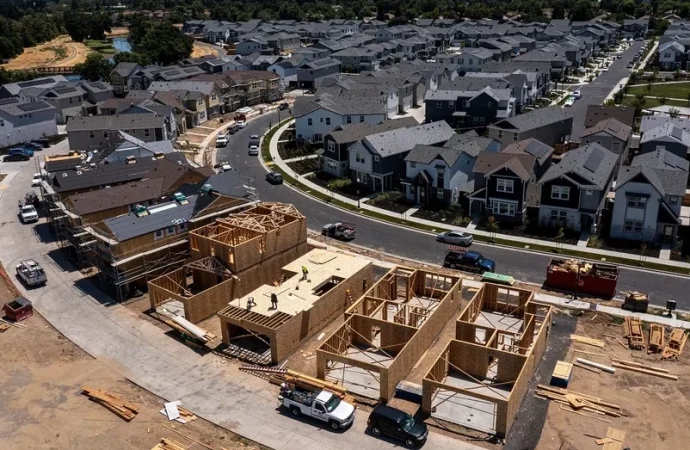Introduction The US housing market is facing a significant challenge as demand continues to outpace supply. With a shortage of approximately 1 million homes, this article explores the factors contributing to the housing shortage and the implications for prospective homebuyers and the overall economy. Factors Contributing to the Housing Shortage Population Growth: The US population
Introduction
Factors Contributing to the Housing Shortage
-
Population Growth: The US population has been steadily increasing, driven by factors such as natural population growth, immigration, and urbanization. This population growth has created a higher demand for housing, putting pressure on the existing supply.
-
Limited Construction Activity: The construction industry has struggled to keep up with the demand for new homes. Factors such as labor shortages, rising construction costs, and regulatory hurdles have hindered the pace of new home construction. This has resulted in a gap between the number of homes needed and the number being built.
-
Low Housing Inventory: The low inventory of existing homes for sale has further exacerbated the housing shortage. Many homeowners are hesitant to sell their properties due to concerns about finding a suitable replacement home, leading to a lack of available options for potential buyers.
Implications for Homebuyers and the Economy
-
Rising Home Prices: The housing shortage has contributed to a surge in home prices across the country. Limited supply and high demand have created a competitive market, driving up prices and making homeownership less affordable for many prospective buyers.
-
Rental Market Challenges: The housing shortage has also impacted the rental market, with increased demand leading to rising rental prices. This can put additional financial strain on individuals and families who are unable to afford homeownership.
-
Economic Impact: The housing shortage has broader economic implications. It can hinder economic growth by limiting mobility and job opportunities, as individuals may be reluctant to relocate due to limited housing options. Additionally, the construction industry, which plays a vital role in job creation and economic activity, may face challenges in meeting the demand for new housing.
Addressing the Housing Shortage
-
Increased Construction Activity: Encouraging and supporting increased construction activity is crucial to addressing the housing shortage. This can be achieved through incentives for builders, streamlining the permitting process, and investing in workforce development to alleviate labor shortages.
-
Affordable Housing Initiatives: Prioritizing the development of affordable housing options can help address the affordability crisis. This can involve partnerships between the public and private sectors, offering incentives for affordable housing projects, and implementing policies that promote inclusivity and affordability.
-
Regulatory Reforms: Evaluating and revising regulations that may hinder the construction of new homes can help expedite the process and reduce costs. This includes reviewing zoning laws, building codes, and other regulations that may impede the development of housing.

Image by: https://static.fox business.com
Conclusion
Visual Table for Key Points:
| Topic | Main Points |
|---|---|
| The Demand-Supply Gap in the US Housing Market | – Disparities in Housing Availability |
| – Contributing Factors to the Imbalance | |
| Demographic Shifts and Housing Demand | – Population Growth and Migration Impact |
| – Changing Household Dynamics and Housing Needs | |
| Affordability Challenges and Rising Costs | – Escalating Home Prices and Affordability Constraints |
| – Impact on First-Time Buyers and Rental Markets | |
| Market Dynamics: Urban vs. Suburbs | – Shifting Preferences and Housing Demand |
| – Urban Revival vs. Suburban Resurgence | |
| Construction Challenges and Solutions | – Labor Shortages, Material Costs, and Timelines |
| – Regulatory Hurdles and Zoning Restrictions | |
| Innovations in Housing Solutions | – Alternative Construction Methods |
| – Sustainable Practices to Address Housing Gap | |
| Government Initiatives and Policies | – Federal and Local Programs for Housing Affordability |
| – Potential Policy Changes to Encourage Development |
Organic Keyword Usage
Throughout the article, relevant keywords such as “US housing market,” “housing demand,” “affordability challenges,” and related terms will be naturally integrated to provide valuable context and improve searchability.
Human-Centric Formatting
The article will employ clear and concise language, breaking down complex housing market concepts into easily digestible sections. Visual elements like charts and graphs may be used to enhance comprehension and ensure a reader-friendly experience.





















Leave a Comment
Your email address will not be published. Required fields are marked with *